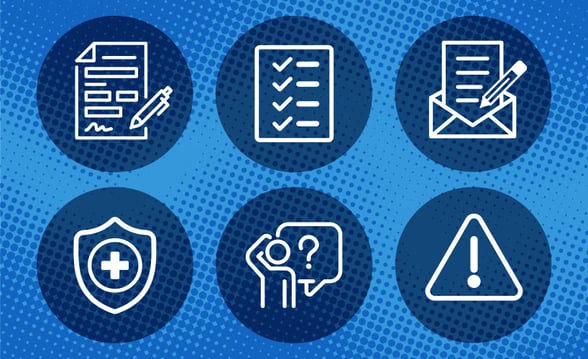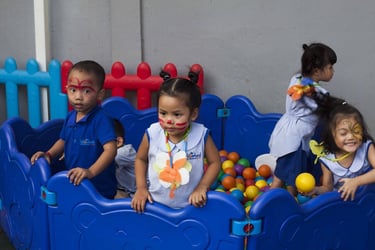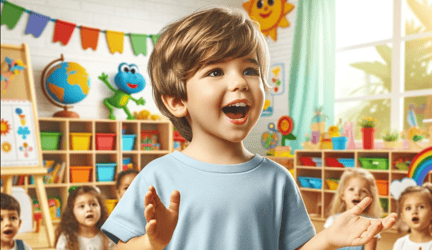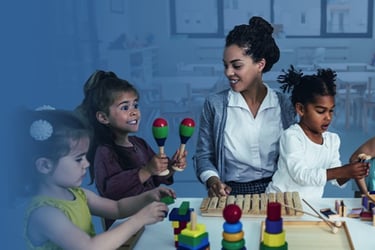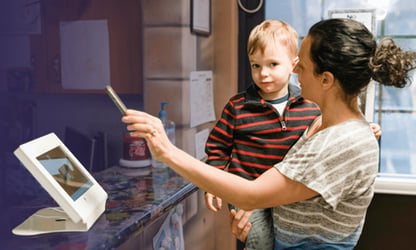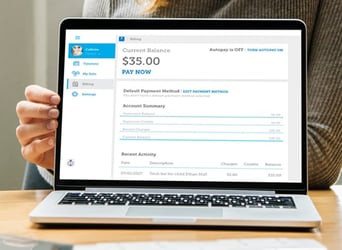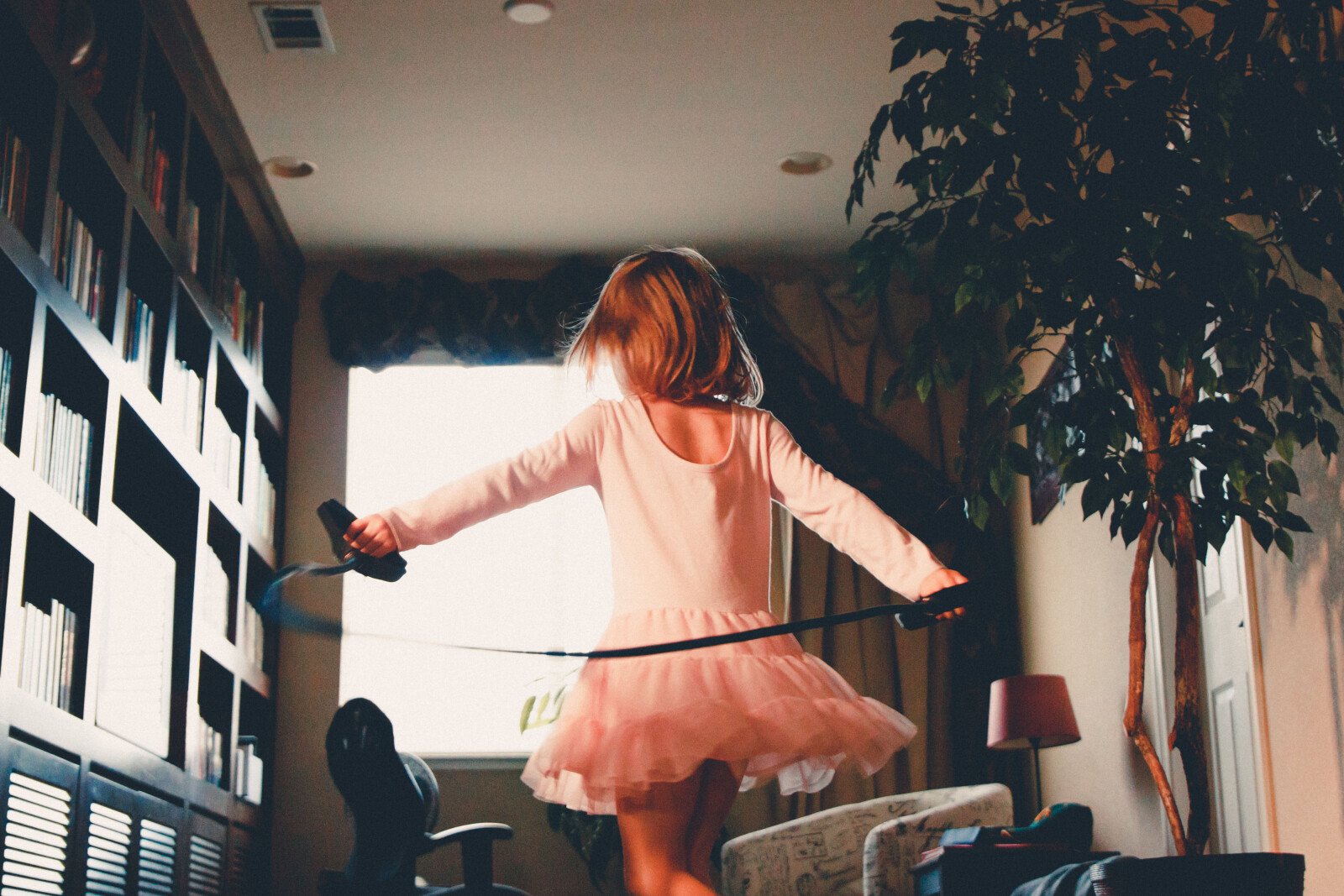
Dive into the world of preschool themes, where music and movement play a pivotal role in shaping the young minds of toddlers and preschoolers. Imagine a classroom buzzing with the sounds of music, laughter and the pitter-patter of little feet dancing around. This isn't just fun and games; it's a crucial part of early childhood education. Music and movement activities are not mere fillers in the daily routine; they are powerful tools that foster a range of developmental skills. From enhancing motor skills to boosting cognitive development, these activities are the building blocks for a well-rounded educational experience.
Table of Contents
- Benefits of Music and Movement for Preschoolers
- Top 18 Engaging Music and Movement Activities for Preschoolers
- How Do You Teach Preschool Music and Movement?
- Overcoming Challenges in Implementation
- FAQs for Incorporating Music and Movement
- Get 70+ Editable and Printable Templates for Almost Every Preschool Situation
Benefits of Music and Movement for Preschoolers
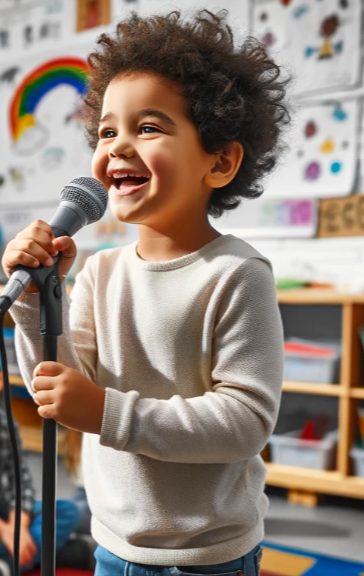
When preschoolers engage in music and movement activities, they're not just having fun; they're also developing critical cognitive, social and emotional skills. Let's break down these benefits:
| Benefit | Description |
|---|---|
| Cognitive Development | Music enhances memory, attention and reasoning skills. |
| Social Skills | Collaborative activities promote teamwork and empathy. |
| Emotional Growth | Expression through music and dance aids emotional regulation. |
| Motor Skills | Dancing and playing instruments improve coordination, balance and physical development. |
| Literacy Development | Songs and rhymes enhance language acquisition and comprehension. |
| Creativity | Music and dance encourage imagination and creative expression. |
| Routine Enhancement | Incorporate music for smoother transitions and structured daily routines. |
Scientific Evidence Supporting the Benefits
- Music's role in routine classroom activities: According to Millersville University, music is instrumental in creating structured classroom routines and easing transitions.
- Development of group participation and listening skills: Northern Illinois University highlights how music and movement activities foster group participation and enhance listening skills among preschoolers.
- Link to reading readiness: Michigan State University research demonstrates a direct connection between early music engagement and reading readiness, underscoring the importance of these activities in literacy development.
Top 18 Engaging Music and Movement Activities for Preschoolers
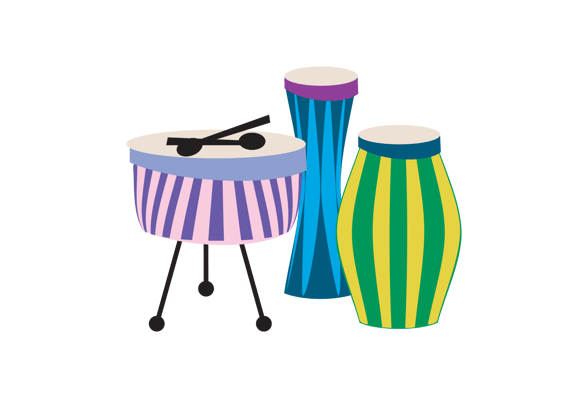
Here's a curated list of dynamic music and movement activities for toddlers and preschoolers, categorized to spark creativity, enhance motor skills and foster a love for music in preschoolers. Each activity is designed to be fun, educational and easy to implement.
| Winter Music and Movement Activities | Classic Music and Movement Games | DIY and Creative Music Activities | Engaging Songs and Rhythms | Spring Music and Movement Activities | Fall Music and Movement Activities |
|---|---|---|---|---|---|
| Spinning Like Snowflakes | Freeze Dance | DIY Instruments | Action Songs | Butterfly Dance | Leaf Twirling |
| Exploring Jingle Bells | Musical Statues | Glow Stick Drumming | Rhythm Games | Garden Sounds Exploration | Harvest Hoedown |
| Icy Path Balance Walk | Musical Chairs | Parachute Play | Nursery Rhyme Choreography | Rain Dance | Pumpkin |
Winter Music and Movement Activities for Preschoolers
1. Spinning Like Snowflakes
Overview: Children dance and spin gracefully to mimic falling snowflakes while listening to winter-themed music.
Materials: Safe, open space; winter-themed music
Music: A gentle, flowing winter movement song
Setup:
-
Clear a spacious area free of obstacles.
-
Queue up the winter-themed music.
Instructions:
-
Gather the children and explain that they will be pretending to be snowflakes dancing in the wind.
-
Start the music and encourage the children to move to the music, moving around the room, spinning and twirling like snowflakes. Demonstrate graceful, fluid movements.
-
Stop the music periodically and have the children freeze in place, holding their snowflake pose.
-
Resume the music and let them continue dancing. Repeat this freeze dance pattern several times.
-
Conclude by having the children slowly sink to the ground, as if the snowflakes are settling.
2. Exploring Jingle Bells
Overview: Children use jingle bells to add a musical element to their movements, learning about rhythm and sound.
Materials: Jingle bells for each child
Music: Any song with a clear, steady beat
Setup:
-
Distribute jingle bells to each child, assisting with wrist bells if needed.
-
Have the music ready to play and clear a space for movement.
Instructions:
-
Gather the children and explain that they will be using jingle bells to make music as they move.
-
Put on the music and demonstrate shaking the bells in time with the beat. Encourage the children to join in.
-
Explore different movements while shaking the bells, such as marching, jumping or twirling. Encourage creativity.
-
Try shaking the bells at different tempos, matching fast and slow sections of the music.
-
Have the children explore shaking the bells near different parts of their body or at different heights to hear how the sound changes.
-
Split the group in two and have them take turns being musicians and dancers, listening to each other's bells.
-
Conclude by having everyone shake their bells together in a grand finale.
3. Icy Path Balance Walk
Overview: Children pretend to walk on icy paths, enhancing their balance and coordination while engaging with winter-themed music.
Materials: Tape or rope to mark paths, winter-themed music
Music: Instrumental music that evokes a wintry atmosphere, like this one
Setup:
- Use tape or rope to create winding "icy" paths on the floor. Make a few different paths with varying difficulty.
- Have the winter-themed music ready to play.
Instructions:
- Gather the children and explain that they are going to pretend to walk on icy paths like penguins. Demonstrate walking with slow, careful steps, arms out for balance.
- Turn on the music and have the children take turns navigating an icy path of their choice. Remind them to move slowly and carefully to avoid slipping on the ice.
- As their confidence grows, challenge them to walk the path backwards or balance on one foot for a moment.
- Encourage the waiting children to cheer on their friends.
- If desired, increase the difficulty of the paths or add gentle obstacles like pillows to step over for an extra balance challenge.
- Conclude by having the children walk the easiest path in pairs, helping each other balance.
Classic Music and Movement Games
4. Freeze Dance
Overview: An all-time favorite activity idea, children dance to the music and freeze when it stops, promoting listening and quick reaction skills.
Materials: Music player
Music: A variety of upbeat songs
Setup: Clear a space for dancing and have the music ready to play.
Instructions:
-
Gather the children and explain the rules: dance when the music plays, freeze when it stops.
-
Start the music and encourage the children to dance freely, using their whole bodies.
-
Stop the music suddenly and have the children freeze in place. Playfully check that everyone is frozen.
-
Resume the music and let the dancing continue.
-
Repeat this pattern several times, varying the length of dancing and freezing periods.
-
For an added challenge, call out a body part that must be frozen when the music stops (e.g., "Freeze with your hands on your head!").
-
Conclude with a celebration dance where everyone can move freely.
5. Musical Statues
Overview: Similar to freeze dance, but with an added twist of striking creative poses, enhancing imagination and balance.
Materials: Music player
Music:
Setup: Start the music.
Instructions:
-
-
Gather the children and explain the rules: dance when the music plays, freeze in a statue pose when it stops.
-
Start the music and encourage the children to dance, exploring different movements and levels.
-
Stop the music suddenly and have the children freeze in a creative statue pose. Encourage them to hold the pose until the music resumes.
-
Resume the music and let the dancing continue.
-
Repeat this pattern several times, challenging the children to come up with new, interesting poses each time.
-
For an added element of suspense, walk around and gently tap statues that are wobbling or moving. If tapped, they must sit out until the next round.
-
Conclude with a gallery walk, having half the group dance and freeze while the other half admires their statue poses, then switch.
-
6. Musical Chairs
Overview: This classic game teaches spatial awareness, strategy and can be modified with music-related movements.
Materials: Chairs, music player
Setup: Arrange chairs in a circle, with one less chair than players.
Instructions:
-
- Gather the children and explain the rules: walk around the chairs when the music plays, find a seat when it stops. Each round, one chair will be removed.
- Start the music and have the children walk around the chairs. Encourage them to move in the same direction and avoid pushing.
- Stop the music suddenly. The children must quickly find a seat. The child without a seat is out.
- Remove one chair and have the out child help you start and stop the music for the next round.
- Repeat until only one child and one chair remain.
- Conclude with a round of applause for the winner and a group cheer for everyone's participation.
DIY and Creative Music Activities
7. DIY Instruments
Overview: Encourages creativity and resourcefulness by having children create their own musical instruments from everyday items.
Materials: Various recyclable materials (boxes, cans, rubber bands, beans, etc.)
Music: Any, as children will create their own music devices and sounds
Setup:
- Sort the materials into categories on a large table.
- Set up a separate decorating station with art supplies.
Instructions:
-
Gather the children and explain that they will be making their own musical instruments.
-
Show examples of simple DIY instruments, such as a rubber band guitar, a bean shaker or a box drum. Discuss how each one makes sound.
-
Let the children explore the materials and choose what they would like to create. Offer guidance and assistance as needed, but encourage independent thinking.
-
Once instruments are built, invite the children to decorate them at the art station.
-
Gather the group together and have each child demonstrate their instrument and the sound it makes.
-
Lead the group in playing a simple song or rhythm pattern together, bringing all of their unique instruments into harmony.
-
Display the instruments in the classroom and encourage the children to play them during free choice time.
8. Glow Stick Drumming
Overview: Combines rhythm and visual stimulation by using glow sticks to beat on drums or other surfaces.
Materials: Glow sticks, drums or surfaces to drum on
Music: Energetic percussion music
Setup:
-
Activate the glow sticks and distribute one to each child.
-
Arrange the drums or drumming surfaces around the room.
-
Dim the lights and have the percussion music ready to play.
Instructions:
-
Gather the children and explain that they will be using their glow sticks to drum along with the music.
-
Demonstrate how to hold the glow stick and safely strike the drumming surface to make a sound.
-
Start the music and encourage the children to explore their drumming surfaces, hitting them in time with the beat.
-
Play with dynamics, having them drum loudly or softly in response to your cues or changes in the music.
-
Encourage the children to move around the space, trying out different drumming surfaces.
-
Challenge them to create and repeat simple rhythmic patterns.
-
Conclude with a free drumming session where the children can play however they like, filling the room with glowing percussion.
9. Parachute Play
Overview: Use a large parachute or sheet for a variety of preschool music and movement activities and games, promoting teamwork and coordination.
Materials: Large parachute or sheet, music player
Music: Upbeat, lively songs
Setup:
- Spread out the parachute and have the children stand around it, grasping the edges.
- Place the balls or balloons in the center of the parachute.
- Have the music ready to play.
Instructions:
- Explain the basic safety rules, such as holding on with both hands and not pulling too hard.
- Practice basic parachute moves like lifting it high and low, waving it gently and walking around in a circle while holding it.
- Play the music and have the children try bouncing the balls or balloons on the parachute in time with the beat, trying to keep them from falling off.
- Experiment with different moves like shaking the parachute quickly to make the balls jump, lifting it high and running underneath or sitting down and pulling it taut behind your backs.
- For a calming activity, have the children lie down under the parachute and gently wave it above them, creating a billowing canopy.
- Conclude with a game where the children work together to roll the balls into a target zone marked in the middle of the parachute.
Engaging Songs and Rhythms
10. Action Songs
Overview: Teaches coordination and rhythm through simple songs with accompanying movements.
Materials: None
Music: Songs like "Head, Shoulders, Knees and Toes"
Setup: Just play the song.
Instructions:
- Gather the children and explain that you will be learning songs with special movements.
- Introduce the first song, saying the lyrics slowly and demonstrating the corresponding movements.
- Sing the song together, moving to music at a slow tempo.
- Practice until the children are comfortable, then try singing and moving at a normal speed.
- Repeat with additional action songs, giving the children opportunities to suggest their own movements.
- For a challenge, try singing the songs faster and faster, seeing how quickly you can do the movements.
- Conclude with a performance, having the children sing and dance for an audience of stuffed animals or dolls.
11. Rhythm Games
Overview: Develops a sense of rhythm and coordination using clapping, tapping or simple instruments. Instrument activities for preschoolers are a great way to get children to express themselves.
Materials: Tambourines or other simple percussion instruments
Music: Rhythmic instrumental music or clapping patterns
Setup:
- Gather any instruments or props that are fun to use.
- Have the children sit in a circle.
Instructions:
-
Begin with a simple four-beat rhythm (e.g., clap, clap, pat, pat). Have the children echo you.
-
Once they have mastered echoing, try a call-and-response game where you clap a rhythm and they answer back with a different rhythm.
-
Distribute instruments or props and experiment with different sounds and patterns. Encourage the children to take turns being the leader.
-
Play with tempo, slowing down and speeding up the rhythms. See if the children can adjust their playing to match.
-
Create a story together, assigning different characters or events to specific rhythm patterns. Tell the story through your rhythmic playing.
-
Conclude with a group composition, having each child contribute a four-beat phrase to create a rhythmic masterpiece.
12. Nursery Rhyme Choreography
Overview: Children learn and perform choreographed movements to accompany a nursery rhyme, enhancing their understanding of the story and rhythm.
Materials: None
Music: A familiar nursery rhyme song (here's a list of dozens of music videos for popular nursery rhyme songs)
Setup:
- Choose a few nursery rhymes to focus on and plan out some basic dance moves that match the lyrics.
- Clear a space for dancing.
Instructions:
- Introduce the first nursery rhyme, reciting the lyrics and discussing the story and characters.
- Teach the children the dance moves slowly, one verse at a time. Break down each movement and give them time to practice.
- Put on the music and have the children perform the dance moves as they sing along.
- Once they have mastered one rhyme, move on to another, letting them contribute ideas for the choreography.
- Encourage the children to express the emotions and actions of the characters through their movements and facial expressions.
- For a challenge, combine dance moves from different rhymes to create a nursery rhyme mashup.
- Conclude with a recital, inviting other classes or family members to watch the children perform their dances.
Spring Music and Movement Activities for Preschoolers
13. Butterfly Dance
Overview: Children mimic the graceful movements of butterflies, encouraging imaginative play and fine motor skill development.
Materials: None, optional butterfly wings or scarves
Music: Light and airy instrumental music (if you want one with "butterfly" in the lyrics, this one will do)
Setup:
- Distribute the scarves or help the children put on their butterfly wings.
- Clear a space for dancing and have the music ready to play.
Instructions:
- Show pictures or videos of butterflies in flight, discussing their gentle, fluttering movements.
- Demonstrate how to hold a silk scarf or move the wings to mimic a butterfly, fluttering it high and low, in circles and zigzags.
- Play the music and let the children explore flying like butterflies, encouraging them to dance lightly on their feet and interact with each other.
- Guide them through different scenarios, such as flying through a field of flowers, resting on a leaf or being blown by a gentle breeze.
14. Garden Sounds Exploration
Overview: Children explore and re-create the sounds they might hear in a garden, enhancing auditory skills and creativity.
Materials: Various musical instruments or objects to create nature sounds
Music: Background garden sounds or quiet instrumental music
Setup: Have a clear space.
Instructions:
-
Discuss how seeds sprout and grow into plants.
-
Have the children curl up on the floor like seeds in the soil.
-
Play the recording of rain sounds and have the children pretend to be seeds absorbing the water, making tiny movements.
-
Slowly transition to the growing music. Guide the children to gradually uncurl and stretch upwards like growing stems reaching for the sun.
-
Encourage them to sway, stretch and reach as they "grow," adding arm movements to represent leaves or flower petals blooming.
-
Have them act out the life cycle multiple times, from seed to full-grown plant, changing their movements to reflect the different stages.
15. Rain Dance
Overview: Mimics the different intensities of rainfall, from gentle drizzle to thunderous storms, through movement and sound.
Materials: Instruments or objects that can mimic rain sounds
Music: Rain-themed music or sounds
Setup:
- Distribute the instruments among the children.
- Have the children sit in a circle and explain that they will be creating a rainstorm.
Instructions:
-
Play the recording of the thunderstorm, pointing out the different sounds of wind, rain and thunder.
-
Have the children gently shake their shakers or rub their rain sticks to mimic the sound of light rain. Gradually increase the intensity.
-
Introduce other instruments one at a time — tapping drums for heavier rain, triangles for lightning, etc. — building to a crescendo.
-
Fade the sounds back out, ending with just a few taps or shakes to represent the end of the storm.
-
Repeat the activity, letting the children take turns "conducting" the rainstorm by cueing the different instrument entrances and dynamic changes.
Fall Music and Movement Activities for Preschoolers
16. Leaf Twirling
Overview: Children dance and twirl, mimicking falling leaves, which promotes spatial awareness and gross motor skills.
Materials: Colorful leaves or leaf-shaped cutouts
Music: Autumn-themed music such as this one or try the video below for a more structured approach
Setup: Distribute the leaves or cutouts.
Instructions:
-
-
Show how leaves fall and twirl from trees.
-
As the music plays, children dance and twirl with their leaves.
-
Encourage them to explore different movement patterns and speeds.
-
17. Harvest Hoedown
Overview: A lively dance that celebrates the harvest season, encouraging rhythm and coordination. These kinds of movement activities are a great way for get children moving in different ways.
Materials: None
Music: Upbeat country or folk music, like this one
Setup: Clear space for dancing.
Instructions:
-
-
Teach simple line dance steps or country dance moves.
-
Dance together to the music, emphasizing the beat and rhythm.
-
Encourage children to add their own moves or partner up for simple dances.
-
18. Pumpkin Roll
Overview: Children roll pumpkins to music, promoting physical coordination and understanding of cause and effect.
Materials: Small pumpkins or orange balls
Music: Seasonal or instrumental music like this one
Setup: Each child has a pumpkin at the start line.
Instructions:
-
-
Demonstrate how to gently roll the pumpkin with different parts of the body.
-
Children roll their pumpkins to the beat of the music across a designated area.
-
Incorporate challenges like rolling the pumpkin around obstacles or to a partner.
-
How Do You Teach Preschool Music and Movement?
Teaching music and movement to preschoolers is an art that requires creativity, patience and a keen understanding of children's developmental stages. Here's a guide to making these sessions enriching and fun.
-
Start with simple songs and movements: Begin with basic songs and movements that are easy for children to follow. This helps build their confidence and interest in participating.
-
Incorporate props and instruments: Use props like scarves, ribbons or homemade instruments to make the activities more engaging and tactile.
-
Use repetition: Children learn through repetition. Repeating songs and movements helps them become familiar with the rhythm of the music and routines and builds their memory and coordination skills.
-
Encourage creativity: Allow children to express themselves through free dance or by choosing their own instruments. Dancing along with music and encouraging their input fosters creativity and a sense of ownership.
-
Integrate educational concepts: Combine music and movement to teach other concepts like counting, colors or the alphabet. For example, a song about different colors can help children learn and identify colors.
-
Be responsive: Observe the children's reactions and adjust the activities accordingly. If they seem disinterested, it might be time to switch to a different song or activity.
-
Facilitate social interaction: Encourage children to participate in group activities or dances. This promotes social skills, teamwork and social-emotional development.
-
Create a safe environment: Ensure the space is safe for movement activities. Clear away any hazards and provide ample space for children to move around.
-
Incorporate multicultural music: Expose children to a variety of music styles and cultures. This broadens their musical experience and promotes cultural appreciation. According to an article from Harvard's School of Education, younger children are more open to different types of music, such as classical music or songs with lyrics in different languages or styles, which can be an effective way to stimulate their minds.
-
Be enthusiastic: Your enthusiasm is contagious. If you're having fun, it's more likely the children will too.
Strategies for Integrating Music and Movement into Daily Routines
- Morning circle time: Start the day with a simple song or movement activity to set a positive tone and get children ready to learn.
- Transition times: Use short songs or movements to signal transitions between activities. A movement break can make changes smoother and more predictable for the children.
- Story time: Integrate music and movement into storytelling. For example, use songs to tell a story or have children act out parts of the story through dance.
- Outdoor play: Encourage music and movement activities outside, where children can explore larger movements and louder volumes.
- End-of-day rituals: Conclude the day with a calming song or gentle movement activity to help children wind down.
Overcoming Challenges in Implementation
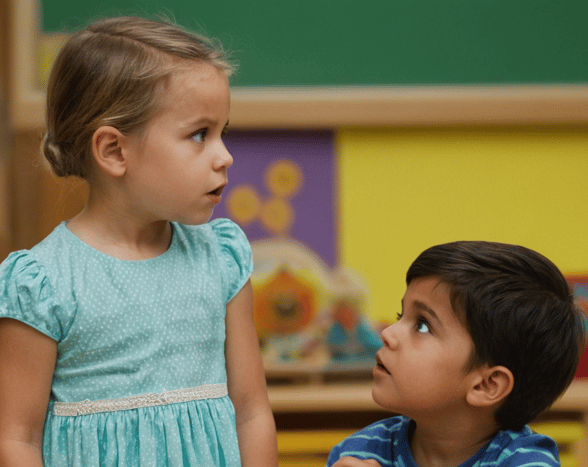
While integrating music and movement into preschool education is beneficial, educators often face challenges. Here are strategies to help develop activities and address common issues.
Addressing Concerns About Control and Time Management
- Structured flexibility: Have a flexible plan that allows for spontaneous musical or movement activities based on the children's moods and interests while maintaining a structured daily routine.
- Time allocation: Dedicate specific times for music and movement activities, ensuring they become a consistent part of the daily schedule without overwhelming the curriculum.
- Classroom management: Use musical cues for transitions or to gain attention, turning potential chaos into controlled fun. For instance, a specific fun song can signal cleanup time or the end of an activity.
Balancing Curriculum Requirements with Music and Movement Activities
- Integrate learning goals: Design movement and musical activities that align with broader educational objectives, such as literacy or math, by incorporating counting songs, identifying specific sounds in words or storytelling through dance.
- Professional development: Encourage ongoing learning for educators to explore innovative ways to play music and blend music and movement with curriculum standards effectively.
- Collaborate and share: Share successful strategies and activities with colleagues. Collaboration can lead to a richer pool of ideas and a more cohesive approach to integrating music lessons and movement activities across different classrooms.
FAQs for Incorporating Music and Movement
How do music and movement contribute to cognitive development?
According to Northwestern College, music and movement activities stimulate multiple brain areas, enhancing cognitive development in various ways:
- Memory and attention: Learning songs and following directions for dance sequences can improve memory and focus.
- Problem-solving and creativity: Engaging children in musical improvisation or movement exploration activities are a great way to encourage the creative thinking and problem-solving skills they need to succeed.
- Language skills: Songs enhance vocabulary and comprehension, as children learn new words and concepts through lyrics and rhythm.
What are some easy ways to integrate music into the preschool day?
- Morning songs: Start the day with a welcoming favorite song that sets a positive tone.
- Transition songs: Use simple songs to signal transitions between activities or routines.
- Interactive storytelling: Incorporate songs or sound effects into stories to make them more engaging.
- Environmental sounds: Encourage children to listen to and replicate sounds they hear in their environment, fostering auditory skills and awareness.
How can music and movement help with classroom transitions?
Music and movement activities also help to provide structure and predictability, easing transitions:
- Cues: Specific songs can signal the start or end of an activity, helping children anticipate what's next.
- Engagement: Engaging children in a movement activity or song during transition times can redirect their energy and focus, reducing downtime and potential disruption.
Are there any resources for finding age-appropriate songs and activities?
Yes. You can use the activities and songs we paired in the text or access curriculum kits like Kindermusik's. They have free trials so you can try them out to see if they work for you.
How do music and movement activities help support the development of reading skills?
Music and movement activities support reading skills development in preschoolers by enhancing phonological awareness, improving vocabulary and language patterns and fostering listening skills and auditory discrimination. They're also effective in aiding memory and sequencing, boosting engagement and motivation and making cross-curricular connections that link music, movement and literacy. If you're looking for more details on how music strengthens reading skills, check out this detailed study from California State University San Bernardino.
Get 100+ Editable and Printable Templates for Almost Every Preschool Situation
We know preschools like yours are busy. That's why we made dozens of templates to help you manage the various aspects of your organization. With billing and invoicing, activity templates, forms and even marketing materials, we have it all. Download all 100 today!



